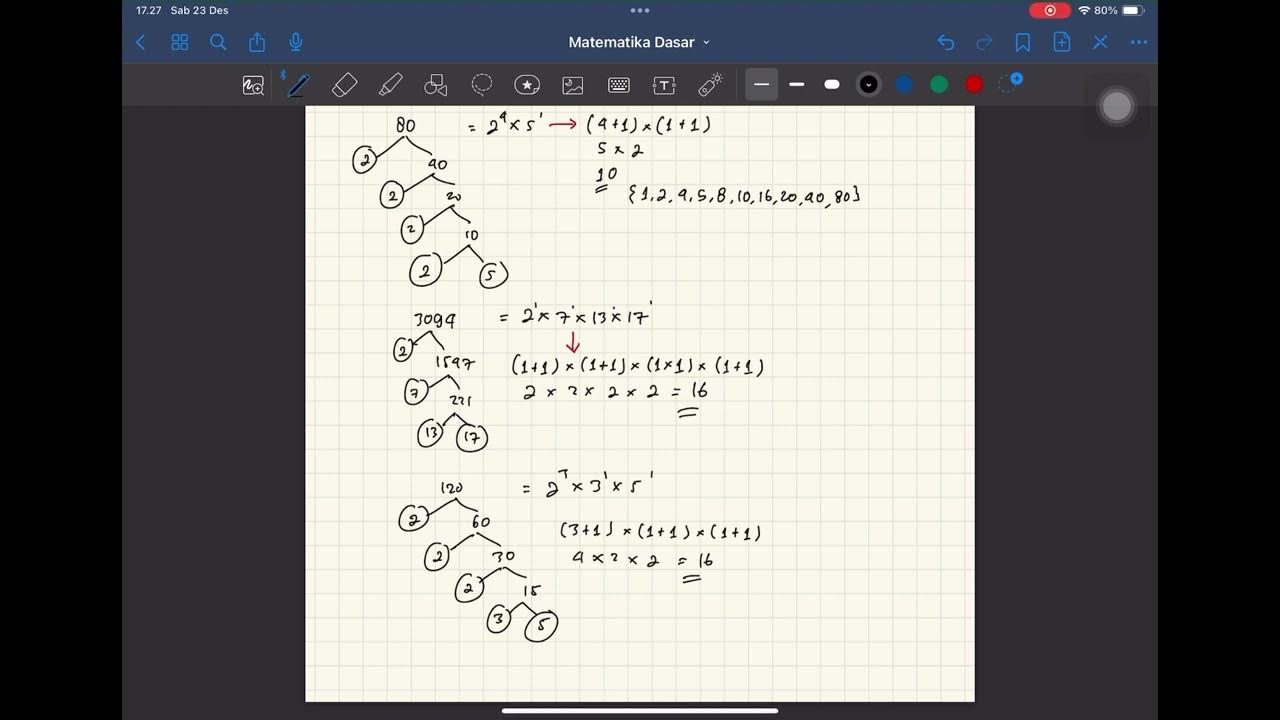Lec 03 Algorithms for prime numbers
Summary
TLDRThis video script explores an algorithm designed to find the smallest prime number greater than a given integer n. It outlines the two key steps: checking integers from n+1 onward for primality and stopping when a prime is found. The process involves a fundamental concept in computing—breaking complex tasks into smaller, manageable subtasks. By checking if each integer is prime, the algorithm guarantees finding a prime eventually, leveraging the fact that prime numbers are infinite. The script emphasizes the power of decomposition in algorithm design and the certainty of eventually discovering the desired prime number.
Takeaways
- 😀 There are two steps in the algorithm, with step two being more complex.
- 😀 In this algorithm, we check every integer starting from n + 1 to infinity to find a prime number.
- 😀 The process of checking whether a number is prime is not a basic step but can be broken down into simpler steps.
- 😀 Decomposing complex tasks into simpler subtasks is a powerful idea in computing.
- 😀 We can combine different algorithms to solve a more complex problem by breaking it down into manageable parts.
- 😀 If we find a prime number, we print it and stop the process.
- 😀 If a number is not prime, the algorithm continues by checking the next integer, n + 2, n + 3, etc.
- 😀 The algorithm might seem to run indefinitely, but eventually, a prime number will be found.
- 😀 The reason we can be sure the process will not run forever is that prime numbers are infinite.
- 😀 The goal of this algorithm is to find the smallest prime number greater than a given integer n.
Q & A
What is the main purpose of the algorithm described in the transcript?
-The algorithm aims to find the smallest prime number that is greater than a given integer n by checking successive integers starting from n+1.
How does the algorithm determine if an integer x is a prime number?
-The algorithm checks if x is a prime number by applying a previously defined method to verify primality. This method is not basic but can be broken down into simpler steps.
Why is step 2 of the algorithm considered complex?
-Step 2 is considered complex because it involves checking every integer from n+1 to infinity and determining if each number is prime, which requires performing non-trivial operations for each number.
What is the significance of decomposing a complex task into simpler subtasks in computing?
-Decomposing complex tasks into simpler subtasks allows us to apply algorithms to smaller, manageable problems, and then combine these solutions to address more complex challenges effectively.
What happens if an integer x is not prime during the algorithm's execution?
-If x is not prime, the algorithm simply moves on to the next integer (n+2, n+3, etc.) and continues checking until it finds a prime number.
Why is it certain that the algorithm will not run indefinitely?
-It is certain that the algorithm will not run indefinitely because prime numbers are infinite. Eventually, a prime number will be found as the algorithm checks successive integers.
How does the concept of infinite prime numbers impact the algorithm's termination?
-The fact that prime numbers are infinite guarantees that no matter the starting integer n, the algorithm will eventually find a prime number, ensuring the algorithm's termination.
What is the role of breaking down complex algorithms in computing, as mentioned in the transcript?
-Breaking down complex algorithms into simpler tasks allows us to leverage existing algorithms for basic steps, making it easier to solve the overall problem by combining these smaller solutions.
What is the general approach of the algorithm in terms of searching for prime numbers?
-The algorithm searches for prime numbers by incrementally checking integers starting from n+1, applying a primality test to each number, and continuing until a prime is found.
What is the 'basic operation' referred to in the transcript in relation to checking prime numbers?
-The 'basic operation' refers to the primality test, which, while not inherently simple, can be broken down into simpler steps that are computationally feasible to perform.
Outlines

Esta sección está disponible solo para usuarios con suscripción. Por favor, mejora tu plan para acceder a esta parte.
Mejorar ahoraMindmap

Esta sección está disponible solo para usuarios con suscripción. Por favor, mejora tu plan para acceder a esta parte.
Mejorar ahoraKeywords

Esta sección está disponible solo para usuarios con suscripción. Por favor, mejora tu plan para acceder a esta parte.
Mejorar ahoraHighlights

Esta sección está disponible solo para usuarios con suscripción. Por favor, mejora tu plan para acceder a esta parte.
Mejorar ahoraTranscripts

Esta sección está disponible solo para usuarios con suscripción. Por favor, mejora tu plan para acceder a esta parte.
Mejorar ahoraVer Más Videos Relacionados

Bukti setiap bilangan bulat lebih dari satu punya pembagi prima

Discrete Math - 4.3.2 Greatest Common Divisors and Least Common Multiples

Next Permutation - Intuition in Detail 🔥 | Brute to Optimal

Bilangan Prima dan Bilangan Komposit

FACTORING GENERAL TRINOMIALS || GRADE 8 MATHEMATICS Q1

BAB 3 Menentukan Faktor Positif | Matematika Dasar | Alternatifa
5.0 / 5 (0 votes)
